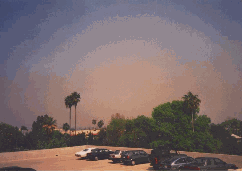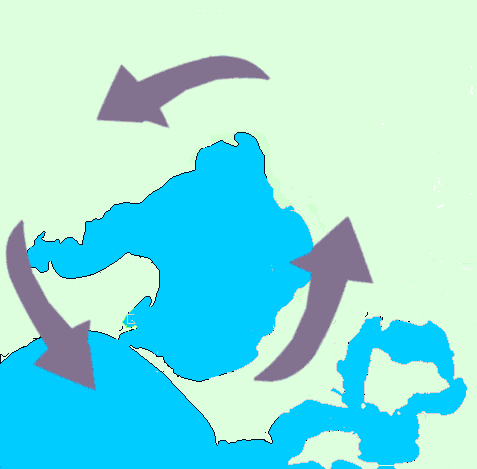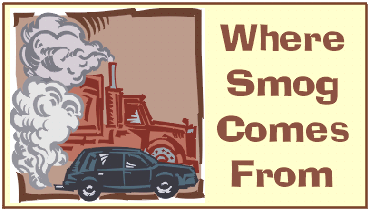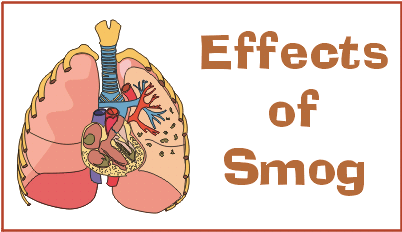How the weather affects
air pollution
The along with the number of souces
and amount of smog produced, the weather plays a big part in the extent
and effects of air pollution on any given day. On windy days, smog is blown
away from the city but may effect country areas instead. On still days,
pollutants are able to become more and more concentrated. Smog concentration
is also increased by the following effects.
Heat and Sunlight
Secondary pollutants are mostly the
result of reactions involving heat and/or sunlight. As a result, photochemical
smog reaches its highest concentrations on warm, sunny days when there
is little wind. The photographs below demonstrate the difference such weather
can make to visible smog (e.g. nitrogen dioxide) concentration.
 |
|
 |
|
A Winter day in Los Angeles
|
|
A Summer day in Los Angeles
|
Temperature
Inversion
Sometimes pollution can be trapped
close to the earths surface rather than rising up into the atmosphere as
is usuallt the case with warm air. Temperature inversions can occur if
the ground has cooled very rapidly (usually on a calm, clear night). A
cold layer of air forms at ground level and is trapped by the warmer air
above it. As peak hour arrives in the morning, pollution produced remains
trapped in the lower, cooler layer of air, causing concentrations at ground
level to become quite high.
The
Melbourne Eddy
 |
Melbourne and some other cities
have particular geographical features that make them more susceptible to
smog than other cities. Melbourne is located on the shores of Port Philip
Bay. This places the city in a sort of bowl shaped area made more effective
by the presence of the Dandenong ranges on one side and other hills on
the other. The result of this is a circulation of air as shown in the diagram
on the left. This means that smog can stay in the area for up to 8 days.
Luckily, this occurs only when there is an easterly wind which is not very
often as the prevailing winds are from the west. |
Summary
- What to look out for on the weather forecast.
If you are one of those people
most at risk from the effects of air pollution, you should beware of
sunny, still days, especially in Summer. If you live in Melbourne, watch
for days on which easterly winds are forecast. You can see this from the
weather map - if there is a low pressure system north of a high pressure
system and both are located to the east of the city, the wind will be coming
from the east.




















